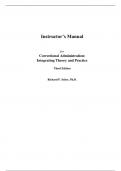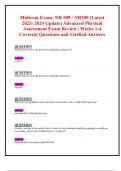Exam (elaborations)
Test Bank For Radiation Protection in Medical Radiography, 9th Edition by Sherer, Complete (Chapters 1 - 16) Questions & Answers with rationales Latest Version
Test Bank For Radiation Protection in Medical Radiography, 9th Edition by Sherer, Complete (Chapters 1 - 16) Questions & Answers with rationales Latest Version Test Bank Radiation Protection in Medical Radiography, 9th Edition by Sherer, Complete (Chapters 1 - 16) Questions & Answers with rationale...
[Show more]












